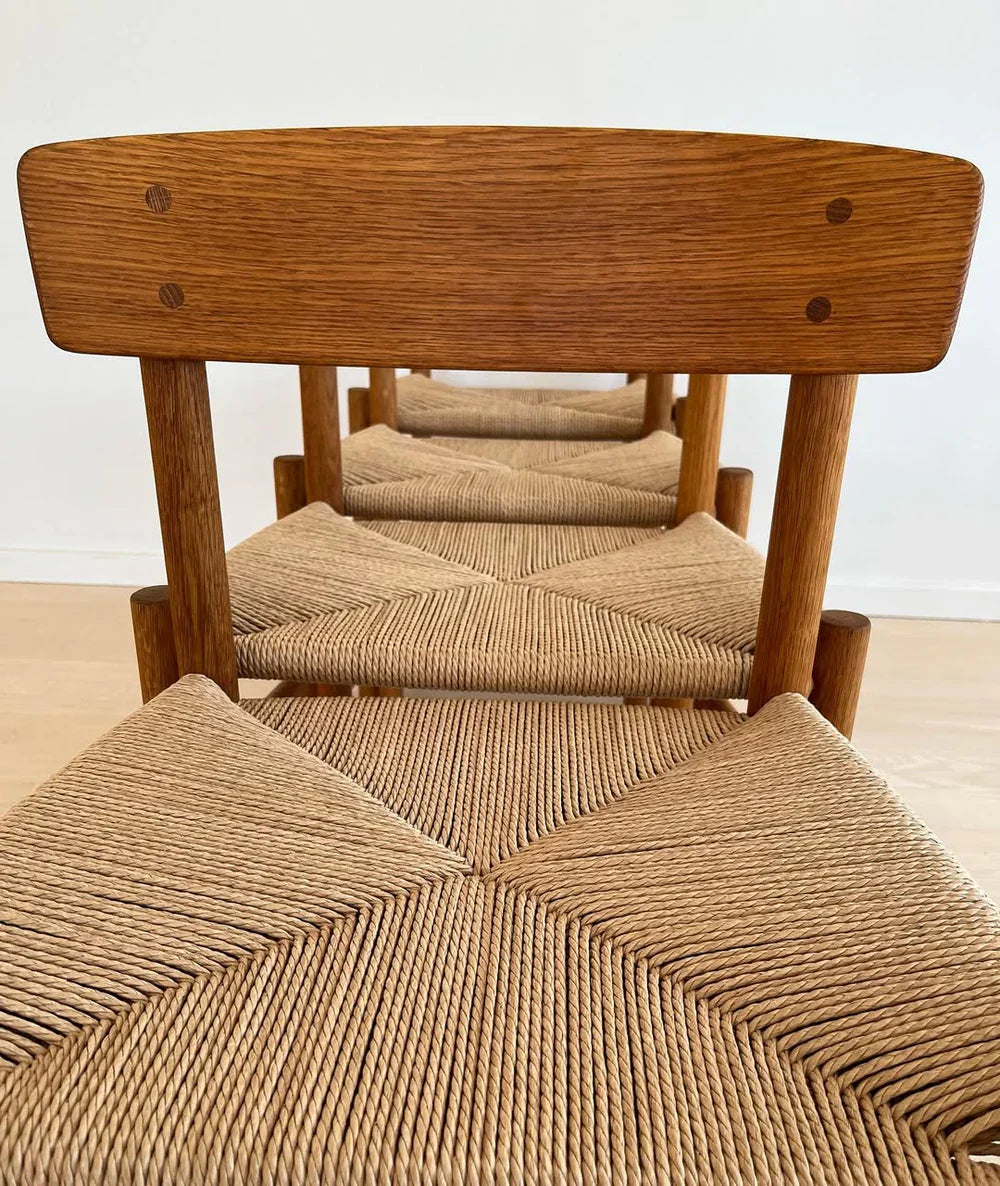Chair wicker has long been a staple of Danish furniture tradition. Many associate it with classic design icons such as Wegner and Børge Mogensen , but wicker is also popular in simpler dining chairs and lounge furniture. With the increasing interest in natural materials, curiosity about chair wicker and making it yourself has grown.
For some, it's the desire to try their hand at an old craft, while for others it's about giving heirlooms or worn-out chairs new life. But what does it actually take to weave a chair yourself – and when is it an advantage to leave the work to a professional?
What does it take to weave a chair?
Chair weaving looks simple on the surface, but in reality it is a precise and demanding craft. The process itself is not just about laying down a beautiful pattern – it is also about ensuring the right tension, symmetry and durability, so that the chair is both aesthetically beautiful and comfortable to sit in.
There are several different techniques, such as envelope braiding , flat braiding and French braiding , each of which requires a different approach and materials. Mastering the techniques takes time, and it is therefore not surprising that many who start doing chair braiding by themselves discover that the task is more extensive than expected.
Materials and tools for chair weaving
Whether you are embarking on the project yourself or are simply curious about the process, it is interesting to know which materials are typically used. For chair wicker, the following are often used:
- Reed or paper yarn – the most common natural materials for Danish chair weaving.
- Cane – a classic material, especially for weaving with open patterns.
- Tools – e.g. knife, hammer, clamps and a template to keep the pattern tight.
- A little water – as many natural materials soften in water, making them more pliable during work.
These elements may sound simple, but it takes experience to use them correctly and ensure a result that is both strong and uniform.
The benefits of professionally made chair wicker
There is no doubt that weaving chairs yourself can be an exciting challenge for those who have the time and desire to learn the craft. But for many, choosing a professional solution provides great value. An experienced chair weaver can:
- Work with precision so that the pattern is completely uniform.
- Choose the right materials that suit the individual chair.
- Ensure correct tension for maximum durability of the chair.
- Restore design classics with respect for both aesthetics and history.
For example, a Wegner chair with professionally done wicker can last for decades – whereas an inexperienced DIY attempt may require the work to be repeated shortly after.
What suits you best?
When faced with a chair that needs to be braided, the choice is often about time, interest and the value of the chair:
- If you are curious about the craft and have the courage to learn, DIY chair weaving can be an enriching experience.
- If, on the other hand, you want a quick and safe result that can last for many years, a professional solution is the obvious choice.
Chair wicker at DKA Design
At DKA Design we have many years of experience with chair wicker and a deep respect for the craft. We work with classic techniques and materials, so the result is both beautiful, strong and long-lasting.
Whether you are simply curious about the process behind chair weaving, or you want a professional result, we are happy to help you give your chairs new life.
Contact us for a no-obligation quote – and we will ensure that your furniture gets the finish and durability it deserves.


